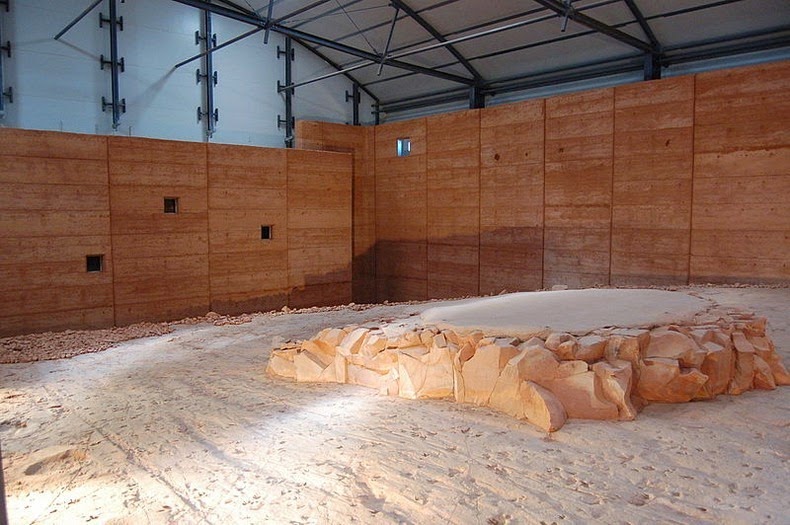Fifty years ago, a local station manager discovered the fossilized footprints while looking for opals. At first he thought they were fossilized bird tracks, but it wasn't until scientists visited the area in 1971 that the footprints began to reveal their true story. Today the footprints, referred to as the “dinosaur stampede” is preserved inside a building at Lark Quarry Conservation Park.

The site has about 3,300 separate footprints that seems to have been made by about 150 dinosaurs belonging to two different species - carnivorous coelurosaurs about the size of chickens, and slightly larger plant-eating ornithopods, some of them as large as emus. The area measures about 22 meters by 22 meters in size.
The herds of Coelurosaur and Ornithopod may have come down to a stream or lake to drink, when a large predator – a Theropod, appeared from the north causing the herd to flee across the lake. Later research however, challenge this story. Analysis of the sediments indicate that the area had no prehistoric lake. Instead, the deposits were made by an ancient channel of water flowing at different depths and speeds at different times. The researchers also didn’t find evidence of a coordinated run in one direction. Rather, the footprints were made over a period of time, perhaps several days, as dinosaurs crossed the channel at different times and under varying conditions. Based on track size and presumed skeletal proportions, the researchers estimated that the dinosaurs stood between five inches and five feet at the hips. And contrary to previous interpretations, only one species of dinosaur was responsible for the abundance of tracks.
We may never really know exactly what happened at Lark Quarry millions of years ago, but the site still represents one of the highest concentrations of dinosaur tracks in the world.








Source
